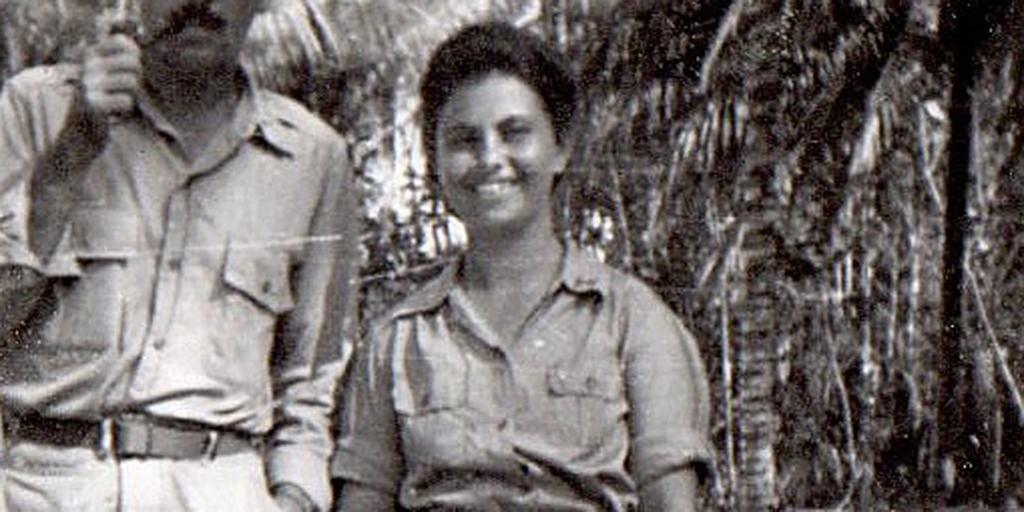Col. Althea Williams: Once one of the Army’s highest-ranking women — and a Baylor alumna

Col. Althea Williams, MHA ’60, was called “Chief Nurse” more times than we can count. When she retired from the U.S. Army Nurse Corps in 1970, she was one of the highest ranking women in the Army. In San Francisco, they threw an entire parade in her honor when she retired. So… just who was this woman?
Williams, who passed away just this summer just shy of her 98th birthday, was born in Colorado, where she grew up on the family ranch and in Fort Collins. In 1942, she entered the Army Nurse Corps, eventually nursing sick and wounded soldiers in World War II, the Korean War and the Vietnam War. Amidst all that, she managed to earn two bachelor’s degrees from Colorado State and a master’s in hospital administration from Baylor.
During WWII, Williams spent three years in tents with “evacuation hospitals” in Australia, New Guinea, the Netherlands, East Indies and the Philippines, where she and other nurses were the first to treat patients straight from the battlefield. Among the nurses’ major challenges was “scrub typhus,” a disease spread by chiggers, for which the only treatment was nursing care to reduce soldiers’ 108-degree temperatures. After WWII, Williams temporarily separated from the service to go to college, earning bachelor’s degrees in home economics and occupational therapy from CSU.
She again entered the Army Nurse Corps during the Korean War, serving in Japan with the 279th General Hospital in Japan. By this time, sick and wounded soldiers benefited from more advanced technology and medical treatments — including helicopters for evacuation and emergency transportation. “We developed the MASH units where we set up a hospital with 60 beds, and we would have patients on the operating room table for trauma treatment within less than six minutes,” she said in a 1994 interview. Shortly after the Korean War, she took a break to earn her master’s degree from Baylor.
During the Vietnam War, she was Chief Nurse of the United States Army — one of the highest-ranking women at the time — and earned the Legion of Merit for her lifesaving work in Vietnam. In presenting Williams’ award, General Creighton Abrams said, “Her careful placement of key nursing personnel throughout the theater led to maximum efficiency in the provision of the highest level of medical care.”
“Every war we’ve ever had — World War II, the Korean War, the Vietnam War — has made a major impact in your treatment in the United States,” she said in 1994. “Many people are living today … because of the knowledge that was given to the medical people. … I nursed before penicillin even came along. So you did nursing care because you didn’t have all these other things. Early ambulation is a straight result from WWII… We found out we had less pneumonia, less blood clots, less pulmonary emboli, all the rest of it because of the treatment and knowledge gained in WWII.”
In total, Williams served in the U.S., Europe, Asia and Australia, and as chief nurse in five different stations. She committed her life to the Army, saving not only the lives of soldiers during the three wars in which she served, but also countless lives of generations after who benefitted from her and other nurses’ advancements during those wars.
Sic ’em, Col. Williams!
You might also like:
* 7 Baylor alumni added to Waco Vietnam Veterans Memorial (May 2018)
* Hattie Brantley: Former Army nurse & prisoner of war – and a Baylor alumna (Nov. 2017)
* Baylor nursing grads’ quick actions save lives at two Dallas-area schools (Dec. 2016)

